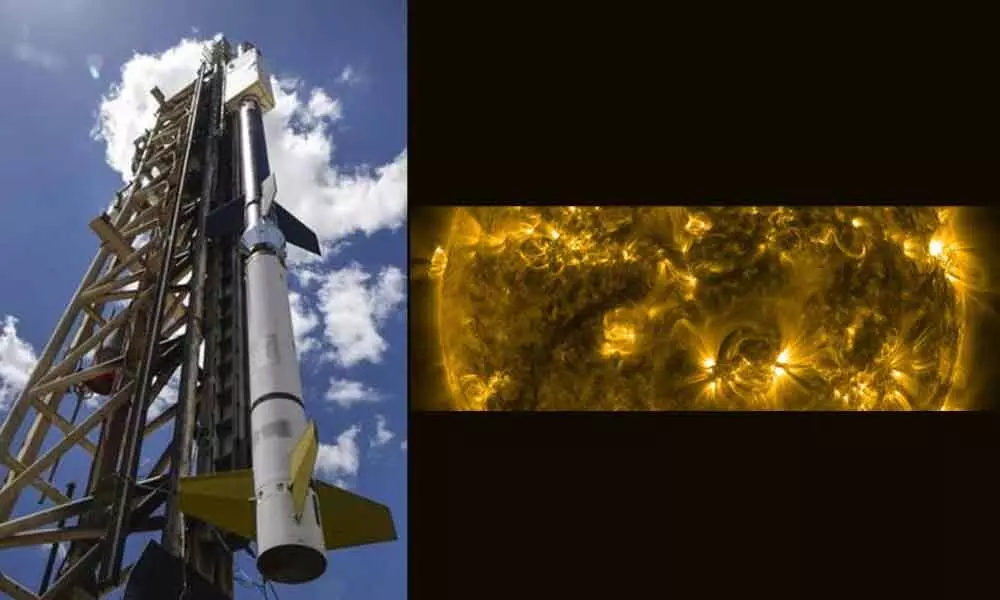NASA's X-ray imager to probe Sun's Corona
Scientists at NASA have successfully launched a sophisticated X-ray solar imager on a suborbital flight via sounding rocket to gather new insight regarding how and why the Sun’s corona grows so much hotter than the actual surface of Earths parent star.
image for illustrative purpose

Washington: Scientists at NASA have successfully launched a sophisticated X-ray solar imager on a suborbital flight via sounding rocket to gather new insight regarding how and why the Sun's corona grows so much hotter than the actual surface of Earths parent star.
Developers at NASA's Marshall Space Flight Center in Huntsville, Alabama, call the mission "MaGIXS" -- Marshall Grazing Incidence X-ray Spectrometer. It launched from White Sands Missile Range in New Mexico at 2.20 p.m. (local time) on July 30.
The MaGIXS mission dispatched its payload, which included a high-powered camera, telescope, and X-ray spectrometer containing a matched pair of grazing incidence parabolic mirrors, to study so-called "soft" X-rays at a wavelength that hasn't been previously observed in such detail.
"Our knowledge of the corona's heating mechanisms is limited, partly because we've not yet been able to make detailed observations and measurements of the temperature distribution of the solar plasma in the region," said Marshall heliophysicist Amy Winebarger, principal investigator for the MaGIXS mission, in a statement.
The Sun's surface temperature is more than 10,000 degrees Fahrenheit, but the corona routinely measures more than 1.8 million degrees Fahrenheit.
MaGIXS will be the first imager to measure specific temperature distributions at different parts of an active solar region. That precision data will help scientists resolve the debate concerning how, and how often, the corona is superheated.
Shedding new light on coronal heating mechanisms could help researchers better understand and even predict potential solar flares and coronal mass ejections, both of which occur most often in connection with regional spikes in coronal heating.

